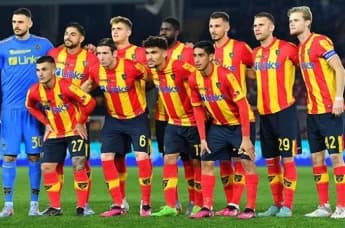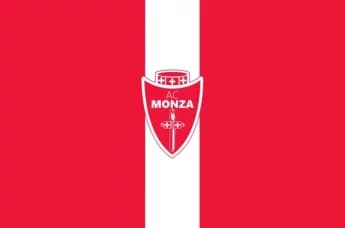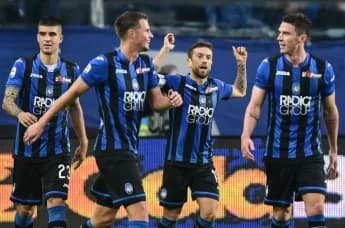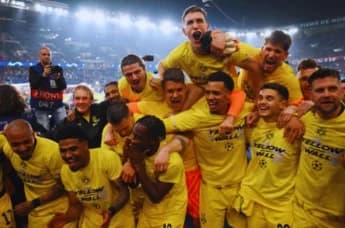From humble beginnings in South London to Premier League mainstays, Crystal Palace’s journey is a testament to resilience, community, and footballing spirit.
Introduction
Crystal Palace Football Club, affectionately known as Palace, stands as one of English football’s most enduring and beloved institutions. Based in Selhurst, South London, the club has carved out a unique identity through its passionate fanbase, dramatic on-pitch moments, and a history filled with both triumph and adversity. Since its professional founding in 1905, Palace has experienced the highs of top-flight football, the lows of financial crises, and the unwavering loyalty of supporters who have stood by the club through every twist and turn.
As the 2024-25 Premier League season unfolds, Palace finds itself in its longest-ever unbroken spell in the top division—a remarkable achievement for a club that has weathered multiple relegations, promotions, and financial hardships. This article delves into the rich history, key achievements, fierce rivalries, and future ambitions of a club that embodies the spirit of South London.
A Club Born from Innovation: The Early Years (1861–1920)
The Amateur Beginnings (1861–1905)
Long before its professional inception, football was played under the banner of Crystal Palace as early as 1861. The original amateur club, formed by members of the Crystal Palace Company’s cricket team, became a founding member of the Football Association (FA) in 1863. The team even reached the FA Cup semi-finals in 1872 before fading into obscurity by 1875.
Professional Formation and Southern League Success (1905–1920)
The modern Crystal Palace FC was officially established in 1905, with the club playing at the iconic Crystal Palace Exhibition Grounds—home of the FA Cup finals at the time. Under the guidance of Aston Villa’s Edmund Goodman, Palace quickly rose through the Southern League, winning promotion in their debut season.
World War I disrupted football, forcing Palace to relocate, but the club returned stronger, joining the newly formed Football League Third Division in 1920. A championship-winning debut season saw them promoted to the Second Division—a sign of things to come.
Selhurst Park and the Rollercoaster Years (1920–1980)
A New Home and Early Struggles (1924–1958)
In 1924, Palace moved to their permanent home, Selhurst Park, where they remain to this day. However, financial difficulties and inconsistent performances saw the club yo-yo between divisions. Post-World War II, Palace languished in the lower tiers, narrowly avoiding relegation to non-league football on multiple occasions.
The Rise Under Arthur Rowe and Malcolm Allison (1958–1973)
The late 1950s and 60s marked a turning point. Under Arthur Rowe, Palace secured promotion from the Fourth Division in 1961. A historic friendly against Real Madrid in 1962—a 4-3 thriller—showcased the club’s growing stature.
Successive promotions under Bert Head saw Palace reach the First Division for the first time in 1969, where they famously thrashed Manchester United 5-0 in 1973. However, managerial changes led to a swift relegation, plunging Palace back into turmoil.
The Venables Revolution and "The Team of the Eighties" (1973–1984)
The arrival of Terry Venables in 1976 sparked a revival. Palace adopted their iconic red-and-blue vertical stripes, rebranded as The Eagles, and earned promotion back to the First Division. Venables’ young, dynamic squad—dubbed "The Team of the Eighties"—promised greatness, but financial constraints led to key departures and another relegation.
The Golden Era and Premier League Foundations (1984–2010)
Steve Coppell’s Glory Years (1984–1993)
The late 1980s and early 90s marked Palace’s golden age under Steve Coppell. The club reached the 1990 FA Cup Final, narrowly losing to Manchester United in a replay. A year later, Palace achieved their highest-ever league finish (3rd in 1990-91), narrowly missing out on European football due to post-Heysel restrictions.
Palace became a Premier League founding member in 1992, but struggles led to relegation in 1993. The following years saw financial chaos, including two administrations (1999 and 2010), threatening the club’s existence.
Resurgence Under Fan Ownership (2010–Present)
A consortium led by Steve Parish rescued the club in 2010, stabilizing finances and laying the groundwork for a new era. Promotion via the 2013 Championship Play-Offs—thanks to Kevin Phillips’ extra-time winner—marked Palace’s return to the Premier League, where they have remained ever since.
Modern Palace: Stability and Ambition (2013–Present)
Premier League Consolidation and Cup Runs
Since 2013, Palace has established itself as a mid-table Premier League mainstay, with memorable moments including:
-
"Crystanbul" (2014)—A 3-3 comeback vs. Liverpool that derailed their title hopes.
-
2016 FA Cup Final—Another narrow loss to Manchester United.
-
Emergence of academy stars like Wilfried Zaha and Aaron Wan-Bissaka.
Selhurst Park Redevelopment and Future Vision
Plans to expand Selhurst Park to 34,000 seats signal Palace’s ambition. The club continues to invest in youth development while targeting sustainable growth, aiming to challenge for European qualification in the coming years.
Rivalries and Fan Culture
Fierce Derbies
-
Brighton & Hove Albion (M23 Derby)—A bitter feud dating to the 1970s.
-
Millwall & Charlton Athletic—heated South London clashes.
The Holmesdale Fanatics and "Glad All Over"
Palace’s ultras, the Holmesdale Fanatics, create one of England’s best matchday atmospheres. The club anthem, "Glad All Over", remains a timeless tradition.
Conclusion: A Bright Future Built on Resilience
From amateur roots to Premier League stability, Crystal Palace’s journey embodies perseverance. With a redeveloped stadium, thriving academy, and ambitious ownership, the Eagles are poised to soar higher than ever.
As the club looks ahead, one thing remains certain: Palace will always be defined by its passionate fans, dramatic history, and unyielding South London spirit.







